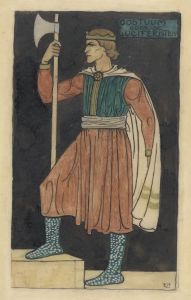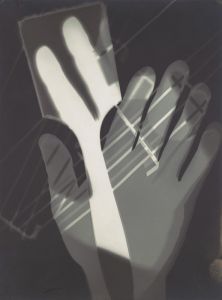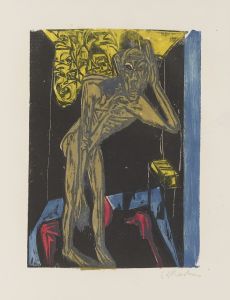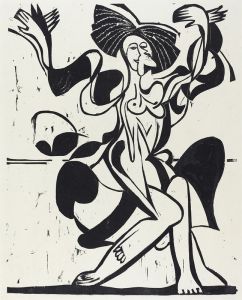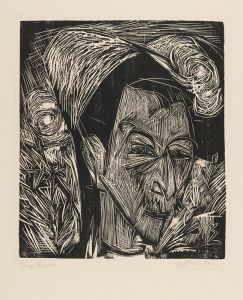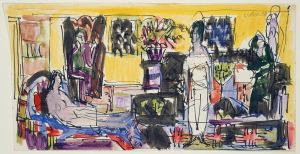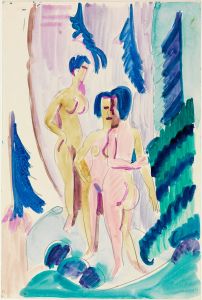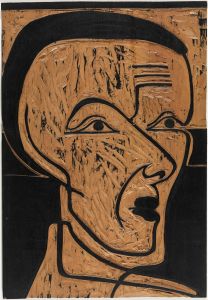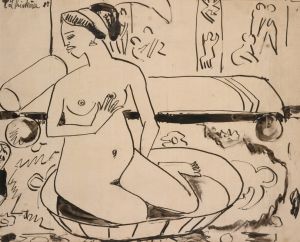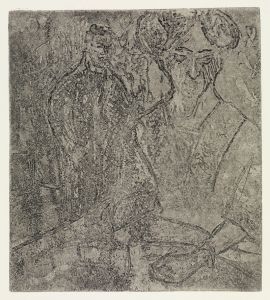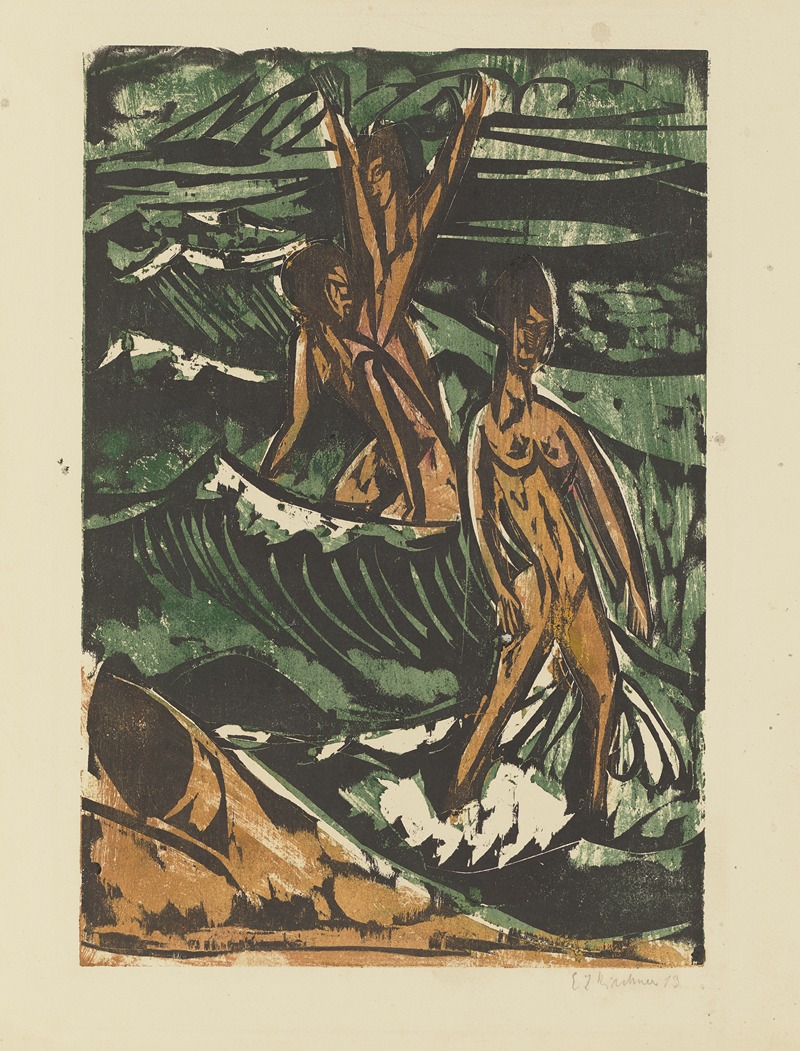
Three Bathers in the Waves
A hand-painted replica of Ernst Ludwig Kirchner’s masterpiece Three Bathers in the Waves, meticulously crafted by professional artists to capture the true essence of the original. Each piece is created with museum-quality canvas and rare mineral pigments, carefully painted by experienced artists with delicate brushstrokes and rich, layered colors to perfectly recreate the texture of the original artwork. Unlike machine-printed reproductions, this hand-painted version brings the painting to life, infused with the artist’s emotions and skill in every stroke. Whether for personal collection or home decoration, it instantly elevates the artistic atmosphere of any space.
"Three Bathers in the Waves" is a painting by the German expressionist artist Ernst Ludwig Kirchner. Created in 1913, this work exemplifies Kirchner's distinctive style and his contributions to the German Expressionist movement, particularly as a member of the artist group Die Brücke (The Bridge).
Ernst Ludwig Kirchner was born on May 6, 1880, in Aschaffenburg, Germany. He co-founded Die Brücke in 1905, alongside Fritz Bleyl, Erich Heckel, and Karl Schmidt-Rottluff. The group sought to create a new form of artistic expression that broke away from traditional academic standards and embraced more raw, emotional, and spontaneous techniques. Their work often featured bold colors, distorted forms, and a focus on the human figure, reflecting their interest in primitivism and non-Western art.
"Three Bathers in the Waves" is a prime example of Kirchner's exploration of the human form and his fascination with the natural world. The painting depicts three nude female figures standing in the surf, their bodies rendered in dynamic, angular forms. The use of vibrant, contrasting colors and the energetic brushstrokes convey a sense of movement and vitality, capturing the essence of the figures' interaction with the waves.
Kirchner's choice of subject matter reflects his interest in themes of freedom and the natural state of humanity. The depiction of nudes in nature was a recurring motif in his work, symbolizing a return to a more primal and unencumbered existence. This theme was also influenced by the group's frequent retreats to rural locations, where they would engage in outdoor activities such as swimming and hiking, often using these experiences as inspiration for their art.
The painting's composition is marked by its bold use of color and form. Kirchner employs a palette of blues, greens, and yellows to create a vivid and dynamic scene. The figures are outlined in strong, black lines, a technique that enhances their presence and adds to the overall sense of movement. The background is simplified, focusing attention on the interaction between the figures and the waves.
"Three Bathers in the Waves" is also notable for its psychological depth. The figures, though engaged in a seemingly carefree activity, are depicted with a sense of introspection and individuality. This duality reflects Kirchner's interest in the complexities of human emotion and the inner life of his subjects.
Throughout his career, Kirchner faced numerous personal and professional challenges, including struggles with mental health and the impact of World War I. Despite these difficulties, he continued to produce significant works that have left a lasting impact on the art world. His contributions to the Expressionist movement and his innovative approach to form and color have cemented his place as a pivotal figure in modern art.
Today, "Three Bathers in the Waves" is celebrated as a key work in Kirchner's oeuvre and an important example of German Expressionism. It is held in various collections and continues to be studied and admired for its artistic and historical significance.





